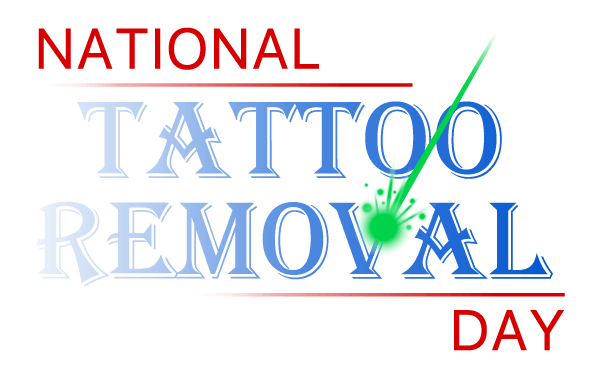About
Laser Tattoo Removal
National Tattoo Removal Day was founded to bring awareness to the laser tattoo removal industry, support individuals interested in removing their unwanted ink, and recognize the businesses and practitioners that provide and perform laser tattoo removal. National Tattoo Removal Day is recognized on August 14 because it is six months prior to Valentine’s Day, which is typically how long it takes to remove an unwanted name tattoo. Most medium, black ink script tattoos, like an ex-partner’s name, can start laser tattoo removal treatment on August 14 and be completely removed by Valentine’s Day.
“Laser tattoo removal is one of the most popular aesthetic procedures we offer,” said Tyffanie Rogers, owner of Blacklist Laser & Cosmetics in Joplin, MO. “It’s exciting to have a day of recognition for this innovative procedure.”
People from various professional backgrounds now offer laser tattoo removal due to the growing demand, including physicians, tattoo artists, medical spas, and even licensed entrepreneurs. Patients of all skin types, genders, and ages get laser tattoo removal for a number of motivations unique to their tattoo.
“Laser tattoo removal is an exciting procedure that has positively impacted many of my patients,” said Dr. Robert Burke, owner of Michigan Center for Cosmetic Surgery in Ann Arbor, MI. “I’m glad national attention is being brought to this innovative procedure and the superior removal results it delivers.”
National Tattoo Removal Day is the perfect opportunity for individuals to finally remove their unwanted ink and for laser tattoo removal providers to offer special promotions. Laser tattoo removal can also be celebrated by patients that have already removed an unwanted tattoo by posting their before and after photos.
Everyone is encouraged to celebrate National Tattoo Removal Day by sharing their laser tattoo removal experiences with the hashtag #NationalTattooRemovalDay. You can also like National Tattoo Removal Day on Facebook.
Tattoo Removal Methods
Today, a technique called q-switching allows lasers to emit energy through a pulsed output. Traditional laser pointers produce a continuous laser beam whereas Q-switched lasers output laser beam pulses that last billionths of a second. These extremely brief light pulses are packed with intense high peak power, allowing them to shatter tiny particles of pigment and penetrate through the skin without damaging surrounding skin tissue.
How Laser Tattoo Removal Works
Over the weeks following a treatment, your body’s immune system naturally consumes the fragmented particles and disposes of them through the lymphatic system, causing your tattoo to fade. With each additional treatment, the laser continues to break down the ink into smaller fragments, working its way down from the shallowest layer of ink to the deepest until the tattoo is completely erased.
Do a Laser's Wavelengths Matter?
Contrary to popular belief, black ink is the easiest color to remove. Darker inks like black, dark purples and blues are usually treated with a 1064 nm wavelength. Red is the second most popular color used in tattoos. Warmer inks like red, orange, brown, and violets are commonly treated with a 532 wavelength. These two wavelengths are the most popular wavelengths used for laser tattoo removal and are supported by most lasers.
Tattoos with bright blues and vivid greens are considered resistant pigments because they reflect 1064 nm and 532 nm wavelengths. Instead, a ruby wavelength like 694 nm must be used since it is highly absorbed by these ink pigments.
Are There Any Side Effects to Treatment?
Find a Provider
There’s no better way to celebrate National Tattoo Removal Day than booking an appointment with a local provider near you. Don’t wait, start your laser tattoo removal journey today!
Visit our Sponsor page or use the map to get connected with your nearest tattoo removal facility.
For product, investor, or press information, call 800.364.9010.
